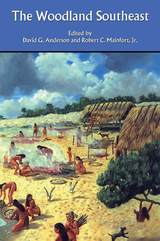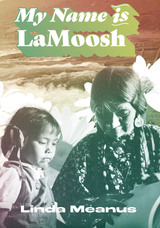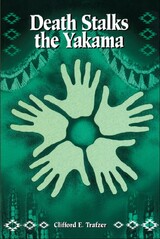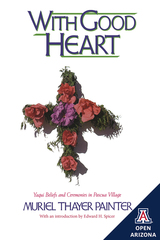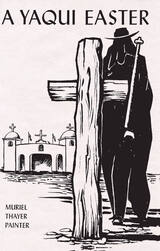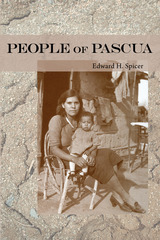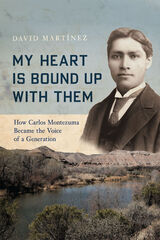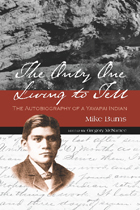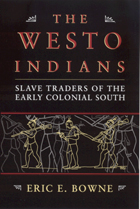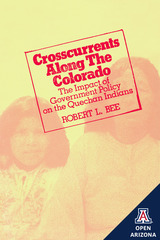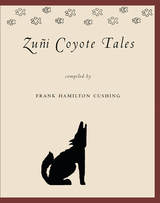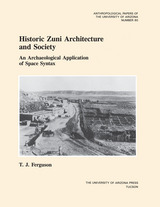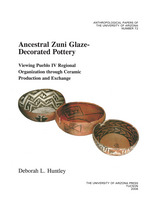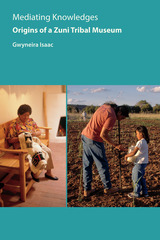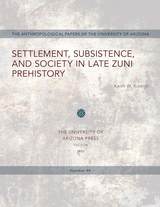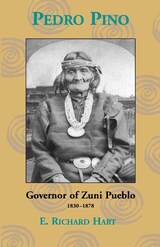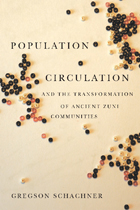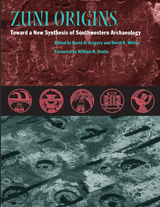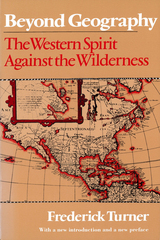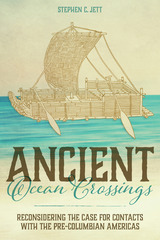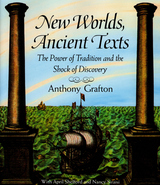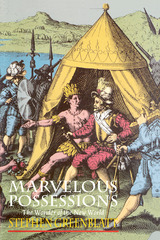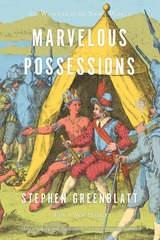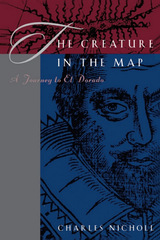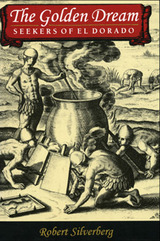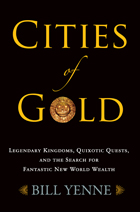Contents
PREFACE ix
Acknowledgmentsx
1. THE PUEBLO IV ZUNI REGION1
Zuni Region Chronology and
Settlement Patterns2
Descriptions of Sampled Pueblos5
Pueblo de los Muertos6
Atsinna Pueblo7
Cienega Pueblo8
Mirabal Pueblo9
Heshotauthla Pueblo9
Lower Pescado Village11
Box S Pueblo11
Ojo Bonito Pueblo12
Spier 170 13
Pueblo IV Organizational Scale13
2.PRODUCTION AND DISTRIBUTION
OF ANCESTRAL ZUNI GLAZE-
DECORATED POTTERY16
Production, Exchange,
and Interaction16
Production Organization16
Demand18
Exchange18
Ancestral Zuni Glaze-Decorated Pottery19
Type Descriptions19
Previous Compositional Studies22
The Ceramic Sample23
General Sampling Considerations23
Electron Microprobe Sample25
Lead Isotope Sample25
INAA Sample25
Ceramic Assemblage Seriation26
Early and Late Ceramic Assemblages26
Lower Pescado Village, Spier 170,
and Ojo Bonito Assemblages28
Expectations for Interaction29
3. TRACKING CERAMIC PRODUCTION
AND EXCHANGE USING INAA31
Zuni Regional Geology31
INAA 31
Methodology33
Compositional Groups33
Intraregional Exchange37
Interpretations42
4. GLAZE RECIPES, USE OF COLOR,
AND PATTERNS OF REGIONAL
INTERACTION44
Pueblo Glaze Technology44
Electron Microprobe Methodology46
Glaze Compositions46
Experimentation with Glaze Paints47
Glaze Recipes50
Glaze Colors53
Slip Colors55
Interpretations59
5.LEAD ORE USE AND LONG-
DISTANCE INTERACTION60
Principles of Lead Isotope
Analysis60
Geologic Distribution and Prehistoric
Use of Ore Deposits60
Hr ICP-MS Methodology62
Sampling62
Sample Preparation63
Instrumentation and Analysis
Parameters64
Data Presentation and Statistics64
Ore Source Groups65
Ore Sources and Glaze Recipes70
Intercluster and Interpueblo Patterns
of Ore Utilization71
6. A MULTISCALAR PERSPECTIVE ON
PRODUCTION, EXCHANGE, AND
PUEBLO IV ZUNI REGIONAL
ORGANIZATION73
Boundaries and Interaction: A Matter
of Scale73
Local Interaction Spheres73
Regional Alliances74
Long-Distance Interaction78
Directions for Future Research79
REFERENCES 83
INDEX97
ABSTRACT, RESUMEN103
FIGURES
1.1.Pueblo IV sites in the Zuni region with
sampled pueblos identified2
1.2.Pueblo de los Muertos site plan6
1.3.Atsinna Pueblo site plan7
1.4. Cienega Pueblo site plan8
1.5. Mirabal Pueblo site plan9
1.6.Heshotauthla Pueblo site plan10
1.7.Lower Pescado Village site plan10
1.8.Box S Pueblo site plan11
1.9.Ojo Bonito Pueblo site plan12
1.10Spier 170 site plan13
2.1.St. Johns Polychrome bowl20
2.2.Exterior of St. Johns Polychrome
bowl in Figure 2.120
2.3.St. Johns Polychrome bowl20
2.4.Heshotauthla Polychrome bowl20
2.5.Heshotauthla Polychrome bowl21
2.6.Kwakina Polychrome bowl21
2.7.Kwakina Polychrome bowl21
2.8.Kwakina Polychrome bowl, showing
exterior of Figure 2.7 bowl21
2.9.Ford diagram illustrating seriation
of two clusters using six ceramic
types27
3.1.Locations of Zuni region clay
formations in relation to sampled
sites32
3.2.All compositional groups plotted by
principal components 1 and 234
3.3.Selected compositional groups plotted
by principal components 1 and 335
3.4.All compositional groups plotted by
cesium and tantalum concentrations36
3.5.Distribution of compositional groups
among production zones/pueblo
clusters39
4.1.Lead oxide weight percentages by
ceramic type for early and late
contexts49
4.2.Copper oxide weight percentages
by ceramic type for early and late
contexts49
4.3.A heterogeneous glaze with low
lead and high copper50
4.4.A vitreous glaze with high lead
and low copper50
4.5.Plot of factor scores by K-means
compositional group52
4.6.Proportions of interior red slips
among pueblo clusters56
4.7.Proportions of exterior red slips
among pueblo clusters57
4.8.Proportions of interior white slips
among pueblo clusters58
5.1.Locations of ore sources examined
in this study63
5.2.Plot of ore source lead isotope
ratios over 206Pb66
5.3.Plot of St. Johns Polychrome lead
isotope ratios67
5.4.Plot of Heshotauthla Polychrome
lead isotope ratios68
5.5.Plot of Kwakina Polychrome lead
isotope ratios69
6.1.Schematic diagram of Pueblo IV
Zuni region organizational scale75
TABLES
1.1.Characteristics of sampled
Zuni sites5
2.1.Frequencies of analyzed ceramic
types by site24
2.2.Date ranges and midpoints for
ceramic types used in seriation26
2.3.Ceramic type percentages and
descriptive statistics for ceramic
assemblage clusters27
2.4.Tree-ring dates by K-means cluster28
2.5.Early and late ceramic analytical
provenience frequencies by site28
3.1.INAA compositional group
assignments for samples by site33
3.2.Ceramic type frequencies by
compositional group35
3.3.Relatively early and late samples
by compositional group35
3.4.Number of samples in each
compositional group by cluster37
3.5.Brainerd-Robinson similarity
coefficients for intracluster and
intercluster comparisons of sample
percentages from different sites39
3.6.Brainerd-Robinson similarity
coefficients for intracluster and
intercluster comparisons of sample
percentages from different
production zones40
3.7.Percentages of presumed nonlocal
pottery by ceramic type for each
cluster41
4.1.Weight percentages of oxides by
ceramic type47
4.2.Coefficients of variation for
molecular proportions of major
glaze components by ceramic
type and time period48
4.3.Summary statistics for oxide molecular proportions by K-means group51
4.4.Results of between-group T-tests51
4.5.Ceramic types by compositional group52
4.6.Glaze compositional groups by
production source and time period53
4.7.Distribution of glaze colors among compositional groups by percent54
4.8.Classification success percentages
by color for compositional groups54
4.9.Percentages of glaze colors by
production source55
4.10.Descriptions of slip color groups55
5.1.Lead ore samples listed by
mining district63
5.2.Ceramic type frequencies by ore
source group70
5.3.Distribution of ore sources among compositional groups70
5.4.Ore source groups by pueblo
cluster and village71
5.5.Tabulation of ore source by
production source72
6.1.Summary of evidence and behavioral implications for different scales
of interaction74

